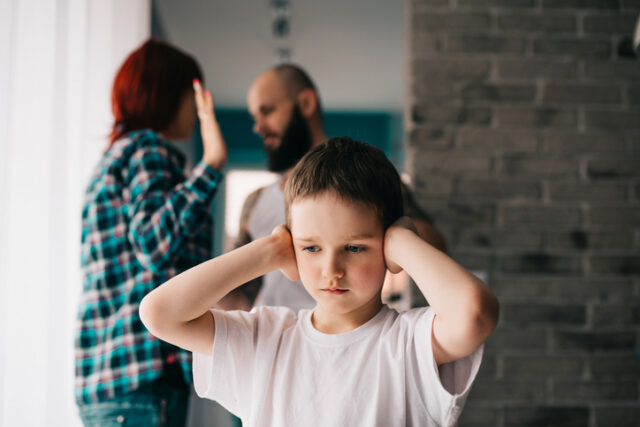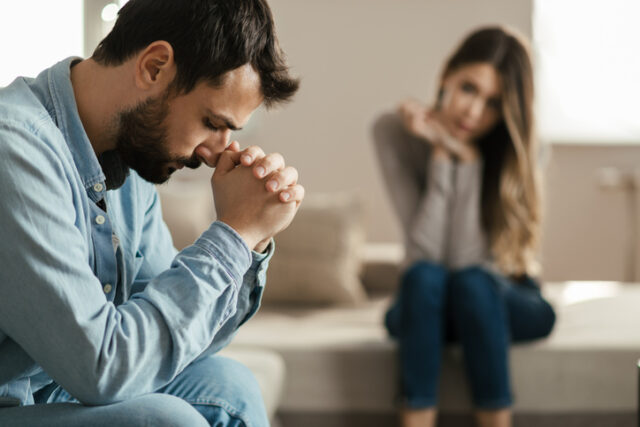Domestic abuse isn’t always easy to recognise, but simply put, it’s a pattern of behaviours designed to control, intimidate, or hurt another person.

According to data from the Office of National Statistics (ONS), around 4.8% of people over the age of 16 in England and Wales experienced domestic abuse in the year ending March 2024, which is about 2.3 million people — a horrifically high number. What can make it so tough to spot is that it can take many forms and impact anyone, regardless of background or circumstances. That’s why it’s so important to understand what domestic abuse looks like and how to get help when you need it most.
1. Domestic abuse isn’t just physical violence.
 Source: Unsplash
Source: Unsplash When people hear “domestic abuse,” physical violence is often the first thing that comes to mind. But abuse takes many forms, including emotional, psychological, sexual, and financial control. These behaviours often work together to create a web of control that’s difficult to escape. Recognising these other forms of abuse is vital. Physical harm is just one part of the puzzle, and many victims endure years of emotional and psychological torment before they even realise it’s abuse. Education is vital to breaking the cycle and reaching out for support.
2. Emotional abuse can be just as damaging.

Being constantly belittled, criticised, or gaslighted leaves deep emotional wounds. Emotional abuse chips away at your self-worth, making you feel unworthy, dependent, or even responsible for the abuser’s behaviour. These scars are often invisible but incredibly painful. It’s important to remember that emotional abuse isn’t “less serious” because it doesn’t leave physical marks. The effects are just as real, and getting help for emotional abuse is a valid and necessary step toward healing.
3. Financial control keeps victims trapped.

Financial abuse is a less-discussed but powerful form of domestic abuse. It can include withholding money, monitoring spending, or sabotaging someone’s ability to work. Without financial independence, many victims feel like they have no way to leave. Services like financial counselling and emergency funds from domestic abuse charities can provide a lifeline. Taking small steps to regain control over your finances is a critical part of breaking free from an abuser’s grip.
4. Isolation is a tactic to maintain control.

Abusers often isolate their victims from friends, family, and support networks. This makes it harder for the victim to recognise the abuse as abnormal and easier for the abuser to maintain control over their life. If someone discourages or outright prevents you from seeing loved ones, it’s a red flag. Reconnecting with even one trusted person can be a powerful step in realising that help is available and that you’re not as alone as you may feel.
5. Domestic abuse affects everyone differently.

Abuse doesn’t discriminate. It affects people of all genders, ethnicities, sexual orientations, and socioeconomic backgrounds. Whether you’re in a long-term marriage, a casual relationship, or even living with a family member, domestic abuse can occur. Breaking down these stereotypes is crucial. No one is immune, and no one deserves to endure abuse. Recognising the diversity of experiences helps build a more inclusive and understanding support system.
6. The signs of abuse can be subtle at first.

Abuse often starts with small, seemingly insignificant behaviours. It might begin with possessiveness or minor criticisms that gradually escalate into more controlling or harmful actions. By the time the abuse is obvious, the victim may already feel trapped. Pay attention to early signs of disrespect or manipulation. If you’re questioning whether a behaviour is normal, trust your instincts and get some advice. It’s better to address concerns early than to wait for the situation to worsen.
7. Children are deeply affected by abuse.

Even if they’re not the direct target, children who witness domestic abuse often experience long-term emotional and psychological effects. They might struggle with anxiety, low self-esteem, or difficulties forming healthy relationships later in life. Getting help isn’t just for your safety, it’s for theirs too. Many support services offer resources specifically tailored for children to help them process their experiences and recover in a healthy, supportive environment.
8. Leaving isn’t as simple as it seems.

People often ask, “Why don’t they just leave?” But the reality is far more complicated. Fear of retaliation, financial dependence, emotional manipulation, or even love for the abuser can create significant barriers to leaving. Understanding these complexities encourages empathy. Support services are there to help navigate these challenges, offering step-by-step guidance for those ready to take the first step toward leaving an abusive situation.
9. There’s support available 24/7 if you need it.

In the UK, organisations like Refuge, Women’s Aid, and the National Domestic Abuse Helpline (0808 2000 247) provide round-the-clock support. These services offer confidential advice, safety planning, and access to refuges for those in need. Reaching out might feel daunting, but these organisations are equipped to handle your situation with care and compassion. You’re not alone, and help is always just a phone call or click away.
10. The police can be a crucial ally.

If you’re in immediate danger, dial 999. If speaking isn’t safe, use the Silent Solution by pressing 55 to alert operators that you need help. The police are trained to respond to domestic abuse and prioritise your safety. Reporting abuse can feel overwhelming, but it’s an important step in protecting yourself and holding the abuser accountable. Many officers are specially trained to handle these cases with sensitivity and discretion.
11. Support from loved ones makes a difference.

If you suspect someone is experiencing abuse, your support can be life-changing. Listen without judgment, offer reassurance, and remind them they’re not to blame. Even small gestures can provide the strength they need to get help. Don’t pressure them to take action before they’re ready. Instead, let them know you’re there when they need you. Sometimes, just knowing someone cares can make all the difference.
12. Refuges and safe houses provide sanctuary.

Safe houses offer immediate refuge for those fleeing abuse. These spaces provide not just safety but also counselling, legal advice, and other resources to help victims rebuild their lives. Contacting a helpline is often the first step to accessing a refuge. These environments are designed to give victims the tools and time they need to start fresh without fear of further harm.
13. Legal protections can offer security.

Restraining orders, non-molestation orders, and occupation orders are legal measures designed to protect victims from further abuse. These orders can keep abusers away from your home or ensure your safety in shared spaces. Getting legal advice from organisations like Rights of Women or Citizens Advice can help you navigate these options. Having legal protections in place can provide peace of mind as you move forward.
14. Recovery is a journey, but it’s possible.

Healing from domestic abuse takes time, but with the right support, it’s absolutely achievable. Therapy, support groups, and self-care practices can help you rediscover your confidence and build a new, healthier life. Recovery isn’t about erasing the past—it’s about reclaiming your future. Every step you take, no matter how small, is a move toward freedom and healing.




